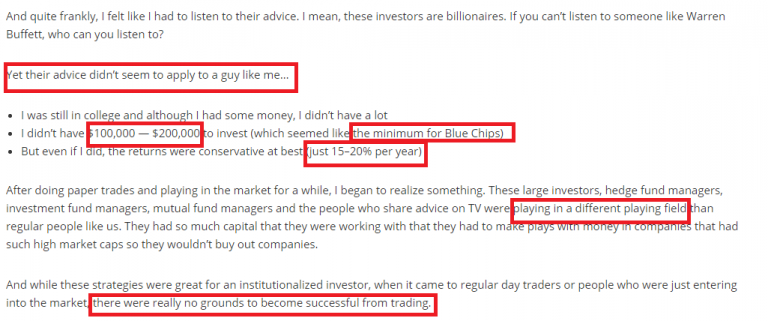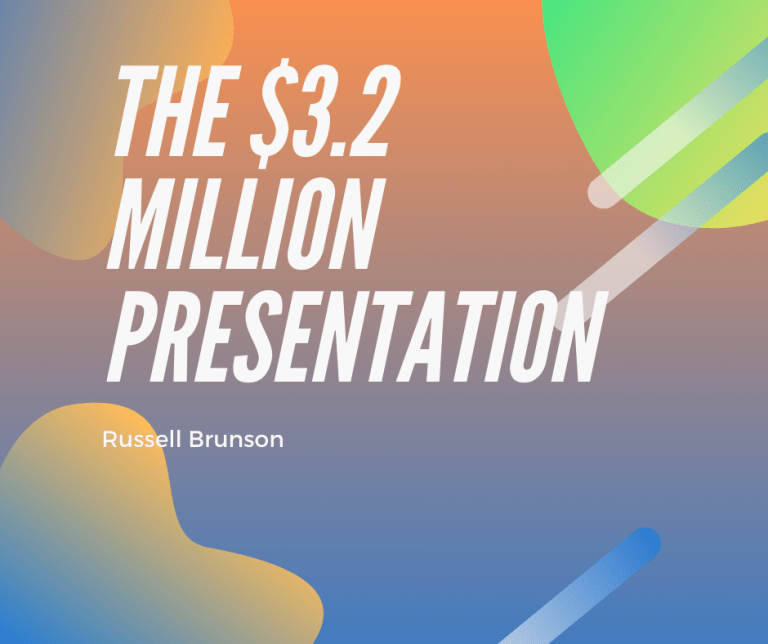Top 20 Most Shared Huff Post Headlines Revealed: Why They Really Went Viral
Do you want to create viral posts that get shared by thousands of social media users?
Then you have to ask why people share articles, blog posts and videos on social media.
To answer this question, I started researching the most shared articles of popular news sites like Huff Post (formerly Huffington Post).
I discovered this Buzz Sumo article by Julia McCoy: Top 30 Huffington Post Most Shared Headlines & Why They Went Viral.
McCoy reveals the top 30 Huff Post most shared articles over the past 3 years (which was 2014-2017).
But McCoy fails to identify the real motives that drive Huff Post readers to share these articles. So I decided to provide my own analysis of the top 20.
Unlike McCoy, I’ll be going deep into the psychological reasons these posts received so many shares on social media.
You will see how The Huff Post crafts their headlines in a way that speaks directly to the reader’s strongest beliefs and values. It’s difficult for their readers not to share these articles. And that provides Huff Post with millions worth of free advertising.
Before We Get Started
Firstly, there are a few things we need to consider before getting into the headlines.
The first thing to consider is that these are the most shared articles from The Huff Post.
These are not the most read articles. Or the most commented articles. Or the most highly rated articles.
All we know is that more people have shared these articles than any other articles posted on Huff Post in the past three years.
Knowing that leads us to another question…
What Makes People Share Articles?
The book Contagious by Jonah Berger gives us some answers to this question.
Berger offers six reasons as to why some content goes viral. And why people will spread information.
Out of those 6 reasons, I think one of them is far more important than the others. That is..
Social Currency
He explains that people share things that make them look good to others. Just like your choice of clothing allows you to express yourself to others, sharing content is another way to express yourself.
Surveys about why people share content seem to support this idea. Many respondents to this global survey by Social@Ogilvy and Survey Monkey said they share content that “helps define their personality.“
Most people aren’t even consciously aware of their true motives when they share content.
Just like people aren’t consciously aware of their true motives for pursuing education, donating to charities, supporting certain political causes.
Kevin Simler and Robin Hanson discuss this in their book The Elephant in The Brain. They explain how these behaviors are driven by much more selfish motives than what people generally admit to.
Much of human behavior is driven by people’s desire to broadcast their values and personality to the rest of the world.
People who value humor and want to be perceived as a humorous person will share content that makes them laugh. Those who value intelligence will share content that makes them look insightful and smart.
So to understand what would make Huff Post readers share content, we need to understand their audience. Who are their readers? What do they value? How do they want others to perceive them?
Why Would Huff Post Readers Share Content?
Let’s firstly look at who the Huff Post audience is.
It’s well known that the Huff Post (formerly Huffington Post) is a left-leaning publication, catering to a liberal audience. That tells us a lot about the political values of their readers.
We know that the average Huff Post reader will be anti Donald Trump, supportive of immigration and in favor of equality.
You can get further insight into the Huff Post audience through Facebook Audience Insights.
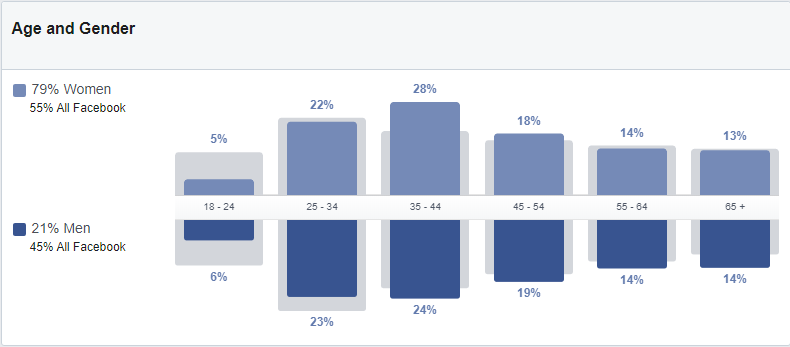
We see that 79% of the Huff Post audience of Facebook are female and 50% of those are aged between 25-44.
You can also see that 67% of their audience are married and 79% have a University education.
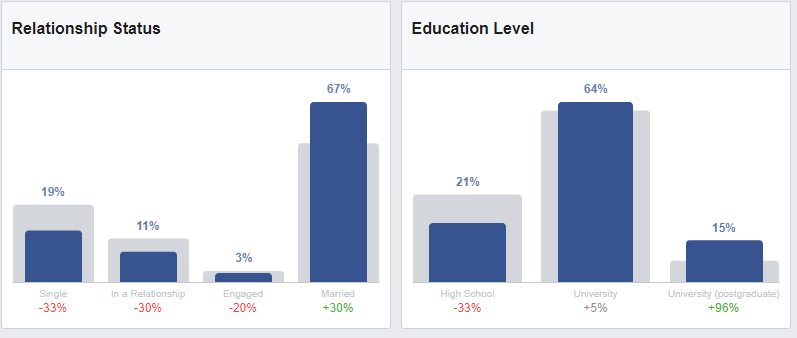
Based on their page likes on Facebook, you can see that Huff Post readers are interested in…
- Gun safety
- Human rights
- NPR
- Elizabeth Warren
- Bernie Sanders
- Inspirational stories (InspireMore)
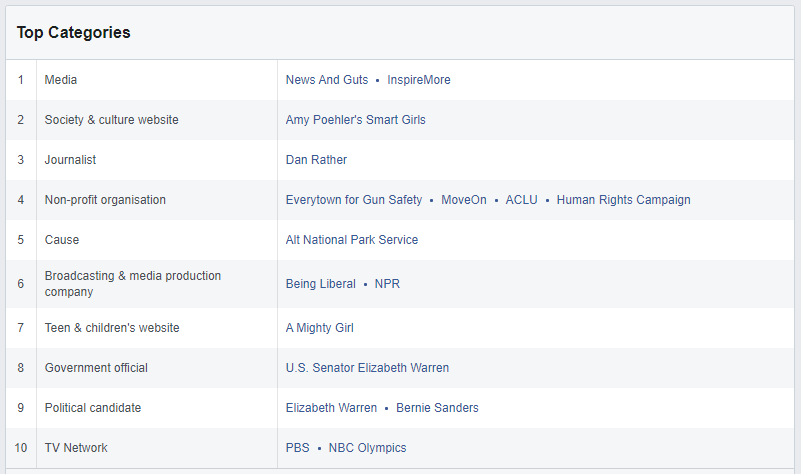
This information should give you a pretty good idea of what Huff Post readers value and how they would like to express themselves through the content they share.
Based on their political interests, we know that Huff Post readers will want to be seen as compassionate, forward-thinking and pro-social. And they definitely want the world to know how much they hate Donald Trump!
Based on their age range and marital status, we know that many will be parents of young, school-aged children. They want to be perceived as good parents.
And from their education, you know that they will want to be viewed as intelligent, creative and insightful.
The Top 20
#20. Coloring Isn’t Just for Kids. It Can Actually Help Adults Combat Stress.
BuzzSumo writer Julia McCoy suggested that this article received a lot of shares because of it’s relevance. At the time of publication, there was a trend in adult coloring books.
And that’s probably true. Articles based on current trends do receive more shares.
But sharing this article, also gives readers an opportunity to demonstrate their creativity and insightfulness to their friends.
#19. 10 Ways Introverts Interact Differently with the World
Julia McCoy suggests that both introverts and extroverts would share this story. But I would suspect that it’s almost entirely introverts sharing this.
When I searched on Twitter to see who was sharing the article, it does appear to be mostly introverts sharing it..
I then looked at Susan Cain’s famous TED Talk about the power of introverts to see if I could see the same pattern in the comments. And sure enough, just about everyone commenting identified as an introvert themselves:
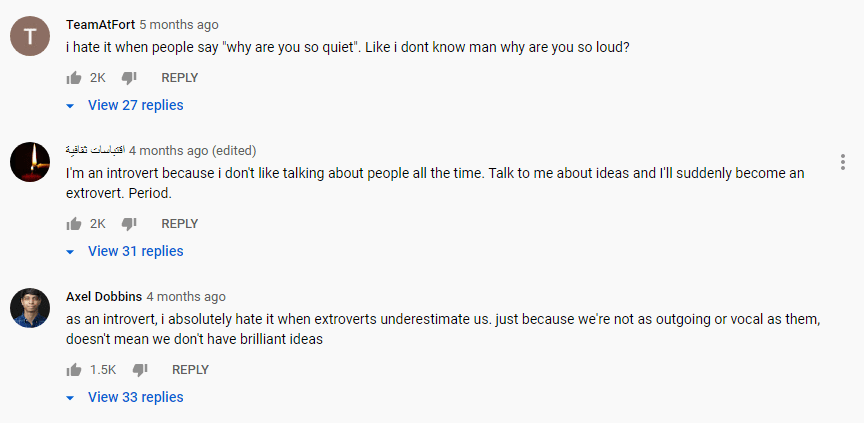
So why do introverts share this article so much?
Because they seek to be understood. When they read the Huff Post article, they are going to think “wow, this writer understands me!”
Most introverts (myself included) can relate to a feeling of being misunderstood or underappreciated. You can see that in the YouTube comments above.
When they share this article, they hope that others will read the article and then better understand them.
#18. Why The New Child Rape Case Filed Against Donald Trump Should Not Be Ignored
No surprises here. We already know that the Huff Post audience hates Trump.
Sharing this post allows them to broadcast their hatred of Trump to the world. They want to be perceived as a highly ethical, pro-social, moral person. And they believe that showing their disdain of Trump will enhance that perception.
An article like this will also elicit a strong emotional response from readers. Those who already dislike Trump will feel anger and disgust.
Jonah Berger explains in his book Contagious, that people are more likely to share content when they are in a state of high arousal – including anger.
#17. I’m Done Making My Kid’s Childhood Magical
The majority of Huff Post’s readers are female. A large percentage are at an age when they would have young children.
It’s to be expected that parenting articles would be highly shared.
The headline is strong because it’s naturally going to evoke curiosity from parents. In the article, the author basically argues that elaborate parties and expensive vacations are over the top and not what truly makes childhood magical.
This is something that many parents are going to agree with and take pleasure in sharing the message.
#16. 16 Habits Of Highly Sensitive People
This article will be shared for very similar reasons to #19.
#15. 5 Reasons Modern-Day Parenting Is in Crisis, According to a British Nanny
There are various reasons a parent would share this article.
Among them would be their desire to show their superiority over other parents. By sharing this article, it implies that they agree with the information and therefore are above other parents who are making the mistakes described in the article.
#14. Dad Films 6 Minutes Of Students Slipping On Ice With Running Commentary
This one does feel like a bit of an outlier compared to the other articles on this list.
I suspect the people sharing this one are mostly different people to those sharing the other articles on the list. They have different motives.
These sharers want to show they have a sense of humor and don’t take life too seriously.
#13. The Real Reason White People Say “All Lives Matter”

A headline like this will always do well on Huff Post. By sharing the article, readers can broadcast their wokeness to the world.
Sharing this article is a form of virtue signalling and it makes the sharers feel good about themselves. They feel like they have made a difference and displayed their moral superiority.
The headline is extremely clever. “The real reason” suggests their is some sort of secret that not everyone knows. And that evokes curiosity.
But it also leverages conformation bias. This is a phenomenon where people seek out information to confirm their existing beliefs.
Many Huff Post would already believe there are racist motives behind the term “All Lives Matter.” When they see this headline, they suspect that the writer will confirm this belief for them.
When they see that the writer does indeed confirm their belief, they can’t help but share the article.
#12. “Super Troopers 2” Is Officially Happening
It’s a bit of a mystery why an article about Super Troopers 2 would attract more shares than any other movies released during that time.
Possibly a case of good timing.
#11. 300 Plumbers Poured into Flint, Michigan, To Install Water Filters For Free
At the time of this article, there was a lot of news coverage about the poor water quality in Flint, Michigan.
Acts of kindness like this make readers feel inspired. And research has shown that content that elicits positive emotions like inspiration, joy and awe is more likely to be shared on social media.
Sharing this content reflects positively on the sharer. It signals that they value kindness and generosity.
#10. 10 Things Your Mom Never Told You
Another article that will appeal to the many mothers of young children who read Huff Post. The article is going to be very relatable for many parents, who will feel compelled to share.
#9. This Billionaire Governor Taxed the Rich and Increased the Minimum Wage – Now, His State’s Economy Is One of the Best in the Country
This article is very much aligned with the economic beliefs of their liberal audience.
Again, the headline leverages confirmation bias. Most Huff Post readers will believe that taxing the rich and increasing the minimum wage is a good idea. Now, this article confirms that belief for them.
Many Huff Post readers will share the article based on the headline alone.
But just in case the liberal reader isn’t already reaching for the share button, the writer even gives them permission to share the article…in the first paragraph:
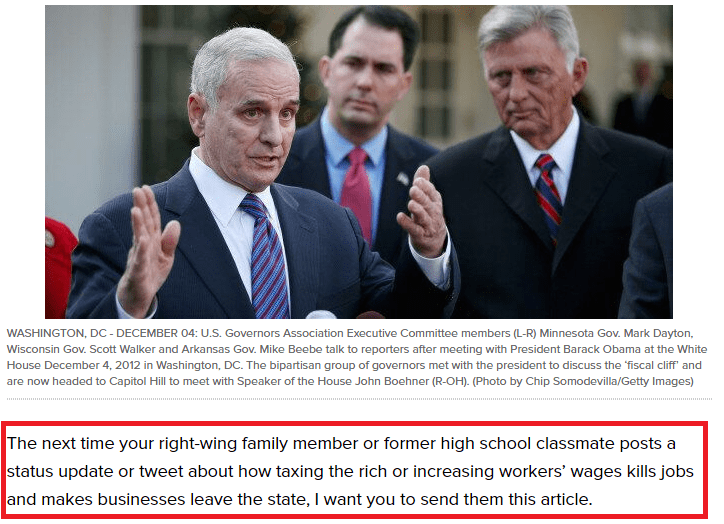
And it’s just human nature for people to want to demonstrate to others how their own beliefs are correct. The reader can’t resist.
#8. Same-Sex Couples Can Now Adopt Children in All 50 States
Once again, Buzz Sumo writer Julia McCoy completely fails to identify the true motives of sharing this article.
Sharing this article allows the reader the broadcast their endorsement of same-sex marriage. This helps to drive the perception of them being a forward-thinking, compassionate and caring person.
For some readers, they will see this event as a victory over their political rivals. And by sharing the article, it ensures those political rivals know about it.
P.S. It’s not only left-wing, liberal-minded people who do this. Right-wing conservatives will also share content that supports their political beliefs as well.
#7. Senate Confirms First-Ever Native American Woman As Federal Judge
Another article that allows readers to broadcast their political values. And McCoy from Buzz Sumo still fails to identify this in her analysis.
McCoy does however make a good point about the use of the words ‘first-ever.’ That signals to the reader that this is something important.
#6. 5 Reasons You Should Have Sex With Your Husband Every Night
This is an interesting one.
At first I couldn’t understand why this would be the 5th most shared article on Huff Post. Then I clicked on the article and discovered this…

The content had been removed. The only reason Huff Post would remove a post like this is if it received a negative reaction.
In most of the other articles featured in this list, readers share them to show their support for the writers beliefs. But considering the post was removed, I suspect Huff Post’s readers were sharing the post to show their opposition to it.
The average female Huff Post reader would not like being told she should have sex with her husband every night. Her outrage would make her feel compelled to share the article, commenting on how wrong it is.
But other readers would have shared the article for different reasons. Married men would have very different motives for sharing the article.
#5. The Top 50 Cities To See in Your Lifetime
Sharing this post gives readers an opportunity to tell everyone how many of these cities they have visited themselves.
#4. An Open Letter to My Friends Who Support Donald Trump
Well who would’ve thought an anti Trump article would appear in the top 5!
The average Huff post reader knows they hate Trump. But they might struggle to articulate exactly why they think Trump is so evil.
Fortunately, Huff Post writer Jeremy Nix has done this for them.
The headline is very clever. It begins with “An Open Letter to My Friends..” This positions the writer (and sharer) as being non-aggressive and compassionate.
If the headline had been more hostile towards Trump supporters, Huff Post readers would have been more reluctant to share it. The Huff Post reader views them self as well educated, civilized and non-combative.
This headline allows them to attack their political enemies while maintaining that benevolent perception of themselves.
The fact that it’s addressed directly to Trump supporters makes it even more enticing to the Huff Post reader. They know some of their Facebook friends are Trump supporters and they want them to see this.
By sharing the article, it’s a very subtle way of saying “hey, read this…it’s proof that I am morally superior to you.“
#3. 109-Year Old Woman Said Secret To Long Life Is Avoiding Men
When 79% of your audience is female, it’s no surprise an article with this headline would get so many shares.
For most people who share this article, it’s driven by a desire to advertise that they have a sense of humor.
This Twitter user took the opportunity to display some self-depreciating humor:
Buzz Sumo writer Julia McCoy completely missed the mark again with her analysis of this headline. She tried to suggest that the use of the word ‘secret‘ would entice readers into the article, hoping to discover the secret of longevity.
Yes, the word ‘secret’ can prompt curiosity in readers. But not in this case, Julia. Firstly, the ‘secret’ is already in the headline…avoid men. And secondly, nobody is clicking on this article expecting to discover serious information about longevity.
#2. The Likely Cause of Addiction Has Been Discovered, and It Is Not What You Think
I was somewhat surprised to see this one so high on the list.
To understand what made this article go viral, I had to look back over my notes from Contagious by Jonah Berger.
Berger explains how people love to share novel or little known information. Sharing something that others don’t know makes you look good.
This is why people find it difficult to keep secrets. It’s why people gossip. It also explains the popularity of hidden bars despite their lack of traditional advertising. People can’t resist the urge to tell their friends about a hidden bar they visited.
In his book Rivited, Jim Davies explains that secretive information is considered more valuable. Sharing this ‘exclusive information’ makes people look good. It makes them feel important.
The addition of the words “it is not what you think,” implies this is novel, little known information.
If the headline of this post had just been “The Likely Cause of Addiction Has Been Discovered,” I guarantee you this post would not have received nearly as many shares.
Another example of this, is the following video by Dr. Berg on YouTube…

Notice the video title?
No One Is Talking About This.
The suggestion is that ‘this is novel information, that most people don’t know.
That video gained over 1 million views in under two weeks and probably thousands of shares as well.
#1. 10 Reasons Why Handheld Devices Should Be Banned for Children Under the Age of 12
Another article that appeals to the parents reading Huff Post.
Sharing the article allows parents to signal their agreement with the writer. And this subtly communicates to others that the sharer is a responsible, caring parent.
By stating an opinion like this directly in your headline, it makes it very easy for people to share it. Someone who agrees that handheld devices should be banned for children under 12, can share this article without even reading it.
The Big Lesson
If you want your article or blog post to go viral, your headline is more important than anything. You need to craft your headline in a way that makes people look good if they were to share it.
Think about what your audience values and how they wish to be perceived by others.
You also need to be aware that this is how you get your posts shared. It doesn’t necessarily mean you will get a lot of clicks or comments.
In fact, many people will share articles without even reading them. If your goal is to get the most clicks and reads, then you may need to use other strategies.
Related Articles
Alex Becker Shopify Webinar Psychology Breakdown
Russell Brunson’s $3.2 Million Presentation: The Influence Psychology


